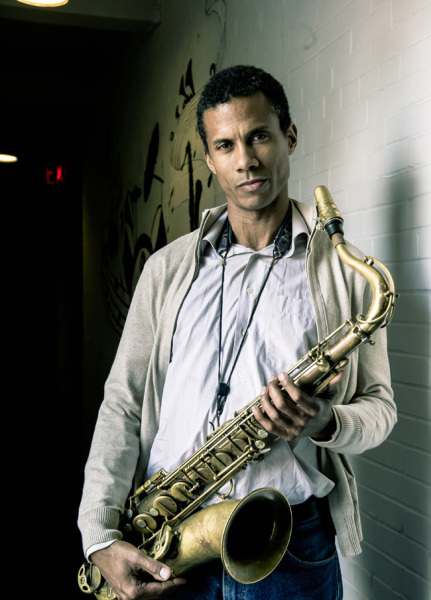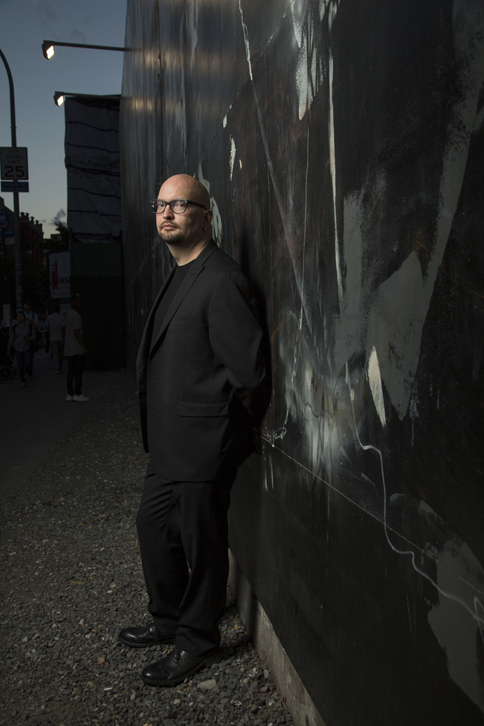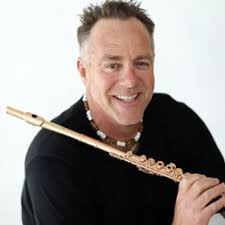Saxophone Mastery at the La Jolla Athenaeum
Dan Atkinson curated another superb show last Saturday, February 25, under the aegis of Jazz At The Athenaeum. The delectable miniature featured the artistry of saxophonist Mark Turner and pianist Ethan Iverson.

Mark Turner, used by permission of La Jolla Athanaeum
Every generation has its main tenor sax “guy,” and Turner has stepped up and assumed the mantel. Standing confidently on the shoulders of his titanic predecessors, one does indeed hear the resonance of all who have come before. Turner’s place is reminiscent of the original “5000 Pound Man,” Rahsaan Roland Kirk who was, according to him, the last saxophonist who could play the entire history of jazz on his horn, thus carrying a five-thousand-pound burden. One also hears a rare technical perfection as exemplified by the late Michael Brecker, but with an entirely different, more introspective tonal and timbral approach. Incomprehensibly, Turner is simply not that well known outside the most au courant mélomane circles. One can only hope that this current state of affairs changes with time and that his popularity becomes more widespread. Nonetheless, whenever Turner releases new music, tenor saxophonists from every borough of New York City swoop down and grab it to begin the arduous process of transcribing everything of his they can. Other more famous and well respected journalists agree that he is the most important and singular voice on the tenor saxophone today.
The Turner/Iverson Duo has reportedly been contracted by the great Manfred Eicher to record for his iconic ECM label in Lugano, Switzerland this June. In preparation for the date, they have been actively developing a new repertoire and began Saturday’s concert with an original work, fresh from Iverson’s pen called “We Come From the Future.” The number unfolded serpentinely with Turner careening off the exosphere of his tenor’s uppermost range. Few players possess the requisite altissimo skill to pull off this head successfully but Turner did so convincingly. Since the tune is not constructed with the standard head-solos-head-coda form and consists one large, repeated “A” section, the melody was the song, similar to Miles Davis’ “Nefertiti.”
As an opener, the piece effectively created a dusky and somber mood that suffused the entire evening. Iverson’s dark-hued

Ethan Iverson, used by permission of La Jolla Athanaeum
treatments and voicings were an ideal foil for Turner’s highly cultivated, though rather demure sound. Eschewing a more accurately tuned modern instrument in favor of a well-worn Selmer Balanced Action and choosing a hard rubber mouthpiece instead of a more immediate sounding metal one allows him to create an introspective sound that perfectly fits the duo. To my ears, Turner’s tone calls forth the ghost of the late Joe Henderson, who also played an old Selmer with a hard rubber mouthpiece.
Echoing the great Henderson, Turner’s “Myron’s World” offered a complex, fractured melody over Iverson’s static chords. Turner’s refined take on Henderson proved to all with ears that we were in the presence of a quite perfect saxophonist. The exquisite post-bop lines from Iverson provided an ideal balance to the airily floating sax work. Mark Turner plays the tenor saxophone like a Heldentenor with no breaks or consequent passagio. His mastery is such that there are no apparent octave breaks, all the while expanding the instrument’s traditional 2-½ octave range into a fully functional four octave one through altissimo playing.
At one point in the performance of Iverson’s “On the Beat” as well as in several other tunes, a bass player would have been a valuable addition. There is only so much territory that a pianist and saxophonist can cover on their own yet, admittedly, a full quartet would have overpowered the room. Not having a musician responsible for the bottom meant that Iverson had to generally assume the full duties of playing his carefully sculpted chords with both hands, all the while committing a sizeable portion of dexterous potential to simultaneously covering the bass line. The duo strategy rarely flagged but when it did, to my ears, it was apparent that more would have been better.
“On the Beat” was a strange bird in any case, sounding something like a classic 70’s sitcom theme crossed with a little Burt Bacharach and combined by a couple of puckish jazz pranksters. After the opening head, Iverson threw down an impressive double time solo with machine link precision. His solo was made even more impressive by completely dropping out for Turner’s solo. During such a solo romp, it is expected that the saxophonist will outline the chords, less by playing arpeggios than by alluding to what it is that makes each chord function interestingly within the chord progression. Turner did all of that but also gave us the added bonus of exposing the changes in a new light, thus giving all who are listening and added appreciation of the composition.
The eleven-tune program contained three “standards” as complements to the remainder of the program of originals by either Turner or Iverson. The first of the standards to see the light of the stage was John Coltrane’s “Lazybird” from his sometimes frenetic middle period. The style was, in Coltrane’s words, from his “three on one” days where each chord in a song would be replaced by three chords. The result of this technique was a repertoire of improvisational vehicles that test the very limits of a jazz player’s skills. Opening a cappella, Turner absolutely tore into Coltrane’s changes with a vengeance and surprisingly, when Iverson rejoined him, they were in perfect sync. This sounds easy but when a soloist is ripping through hard changes without a drummer or chordal instrument to help keep track, it is extremely common for the other musician(s) to lose track of the song’s form. Needless to say, both Turner and Iverson absolutely OWNED the piece and acquitted themselves proudly.
Billy Strayhorn’s “Chelsea Bridge,” another of the standards, was played with such moving simplicity that it nearly hid the deep sophistication of the tune. It was an inspired choice that allowed Turner to fracture the melody in the manner of a Picasso or Braque painting. Listening to this great artist reminded me of the surfer’s joy in encountering a “secret spot” where there are great waves with no one else around to muck things up. Every person in the Athenaeum that evening, I’m sure, felt the profound joy of being welcomed in to an intensely intimate and deeply creative, artistic moment, a musical “secret spot.”
I for one cannot wait to hear what these artists (and you know how guardedly I use that word) put together during their collaboration with Maestro Eicher this summer in Lugano. Everyone would be well advised to keep their ears and eyes open for the release of their work as it will most likely break new ground and make a unique statement in the well-worn duo genre.

Yochanan Sebastian Winston, Ph.D. has performed throughout the United States, Europe and Latin America. His repertoire spans classical, jazz, klezmer, new age, contemporary, rock & roll and pop and is very active as a composer. Dr. Winston holds a Ph.D. from the UCSD, a Diplôme from the Conservatoire National de Region de Boulogne-Billancourt (France), and a Master’s and Bachelor’s of Music from the Manhattan School of Music in New York City.
